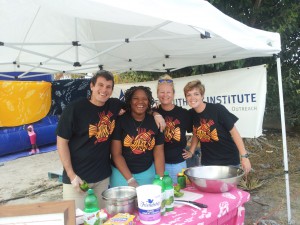
CEI Lionfish team visited Rock Sound’s homecoming celebration. Amid stands selling fritters, grouper, and curry chicken the crew erected a booth dishing out free samples of lionfish ceviche, passing out brochures, and sporting the new line of t-shirts from CEI’s “You Slay, We Pay” campaign. It is at venues like these, when huge numbers of people from around the Bahamas come together to celebrate, talk, and most importantly eat, that outreach is so critical. It is not yet universal knowledge that lionfish are both edible and delicious, so having a presence at local cultural events such as this allows us to spread awareness and change minds.
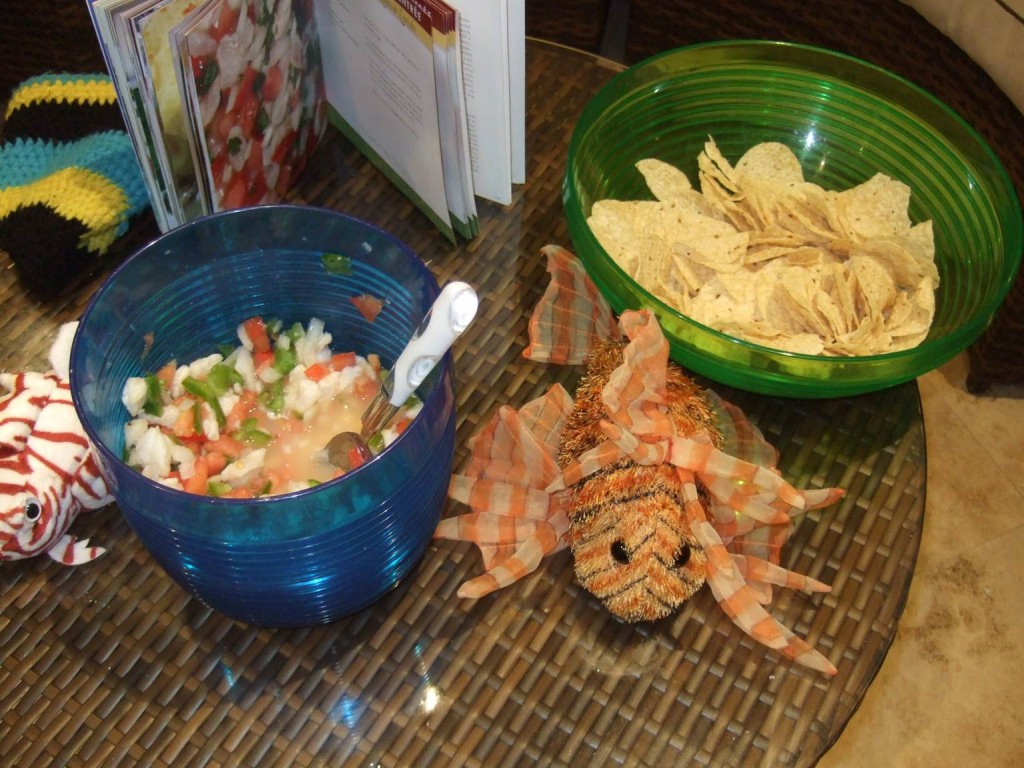

This was evidenced first hand on Saturday, when many locals tried lionfish for the first time. Initially hesitant observers came forward after hearing about the process of safely filleting lionfish, discussing the benefits to many native fisheries from eating lionfish, and seeing the satisfied smiles of previous samplers. Many first-timers were visibly surprised at the clean taste of the white meat. The unanimous consensus was that the fish offers a delicious alternative to other Bahamian classics.
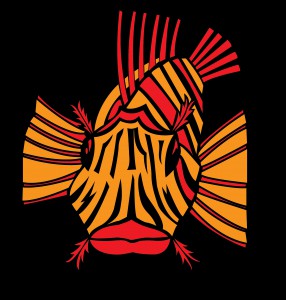
Why is this so exciting and why is outreach like this so important? The invasive and hugely harmful lionfish is a largely untapped marine resource throughout the Caribbean. However, with more and more people trying and loving lionfish at events like Saturday’s homecoming, it is hoped that demand for lionfish as a fishery will rise. Fishermen will then play a greater role in lionfish population control as they work to meet that demand with supply.
How to make your own lionfish ceviche:
1. Start with fresh lionfish fillets, and finely dice. Immerse in lime juice for 20-30 minutes.
2. While lionfish is marinating, dice green peppers, tomatoes, and onions. Place in a bowl to the side. You should have roughly equal amounts of vegetables and fish.
3. Dice a very small amount of habanero or scotch bonnet pepper into extremely small chunks.
4. Drain lime juice out of the lionfish; fish should look opaque and white.
5. In a large mixing bowl, combine chopped fish and all vegetables and peppers. Mix well, season with salt and pepper to taste.
6. Serve and enjoy! You are promoting a sustainable fishery.
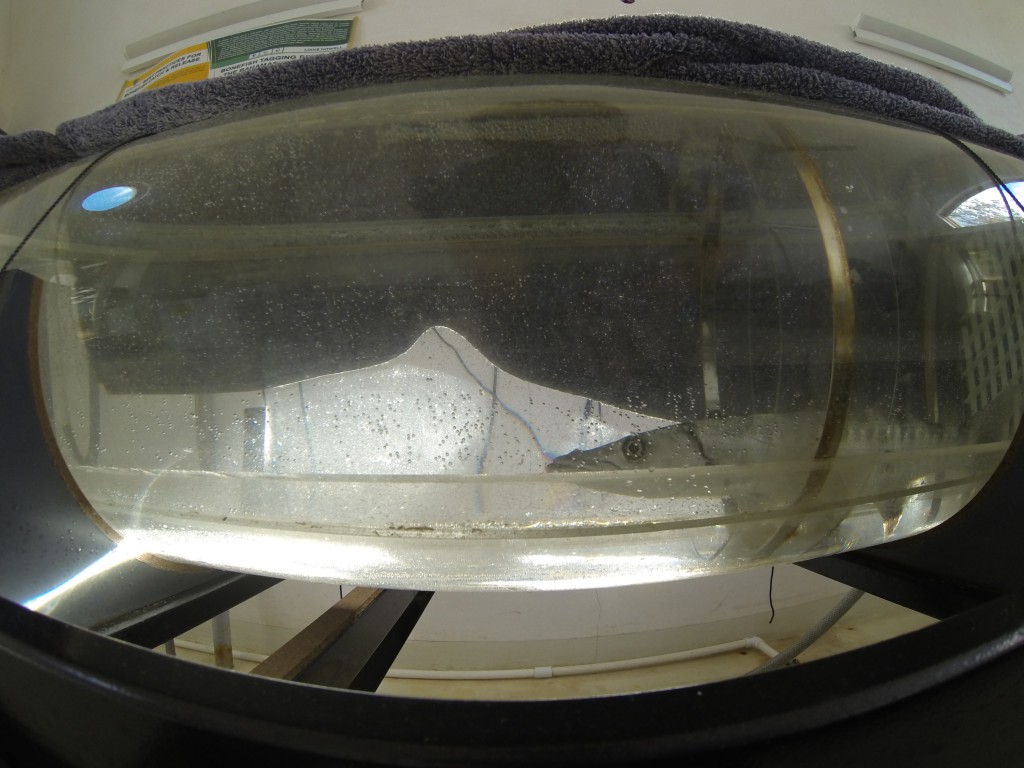
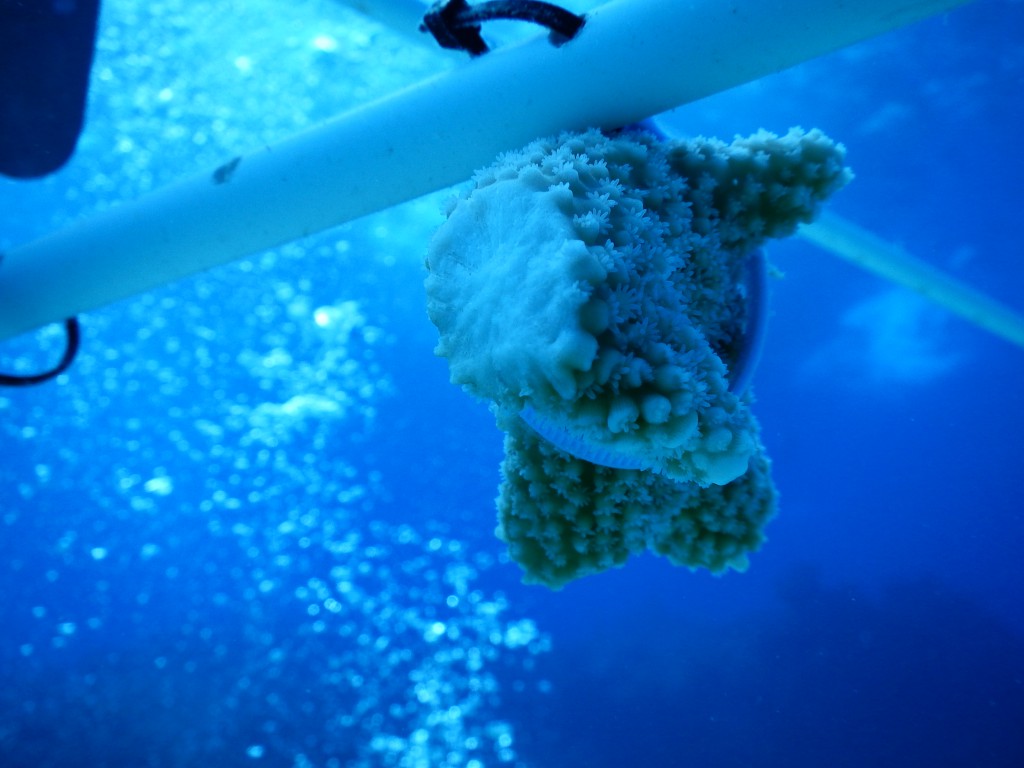
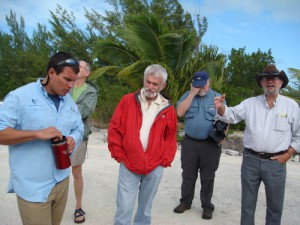 A group of biologists from Universities throughout the United States gathered to discuss the improvement of the research facilities at the Cape Eleuthera Institute (CEI). This meeting was funded by a National Science Foundation planning grant written by PI Dr. Bill Louda (Florida Atlantic University) and Co-PIs Dr. Dave Philipp (University of Illinois), Dr. Brian Lapointe (Florida Atlantic University), and Aaron Shultz (CEI). The expert panel, along with their individual research interests, is listed below. The three day meeting started off with a tour of The Island School and CEI campus, and an excursion to some of the natural points of interest on the island.
A group of biologists from Universities throughout the United States gathered to discuss the improvement of the research facilities at the Cape Eleuthera Institute (CEI). This meeting was funded by a National Science Foundation planning grant written by PI Dr. Bill Louda (Florida Atlantic University) and Co-PIs Dr. Dave Philipp (University of Illinois), Dr. Brian Lapointe (Florida Atlantic University), and Aaron Shultz (CEI). The expert panel, along with their individual research interests, is listed below. The three day meeting started off with a tour of The Island School and CEI campus, and an excursion to some of the natural points of interest on the island.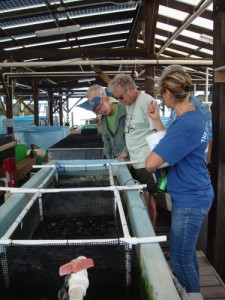 Several group meetings were held to discuss other research stations in the region (E.g., Central Caribbean Marine Institute, Florida Keys Marine Lab, etc.), current research projects at CEI, how to diversify the research portfolio at the institute, and the infrastructure needed to meet current and future demands. The following are highlights from the discussions: the need for an ecosystem based approach to our research initiatives; the need for water quality analysis; and more lab space for visiting researchers and graduate students. Overall, it was a very productive site visit that will aid in the development of the full NSF laboratory improvement grant. CEI looks forward to collaborating with these researchers in the future.
Several group meetings were held to discuss other research stations in the region (E.g., Central Caribbean Marine Institute, Florida Keys Marine Lab, etc.), current research projects at CEI, how to diversify the research portfolio at the institute, and the infrastructure needed to meet current and future demands. The following are highlights from the discussions: the need for an ecosystem based approach to our research initiatives; the need for water quality analysis; and more lab space for visiting researchers and graduate students. Overall, it was a very productive site visit that will aid in the development of the full NSF laboratory improvement grant. CEI looks forward to collaborating with these researchers in the future.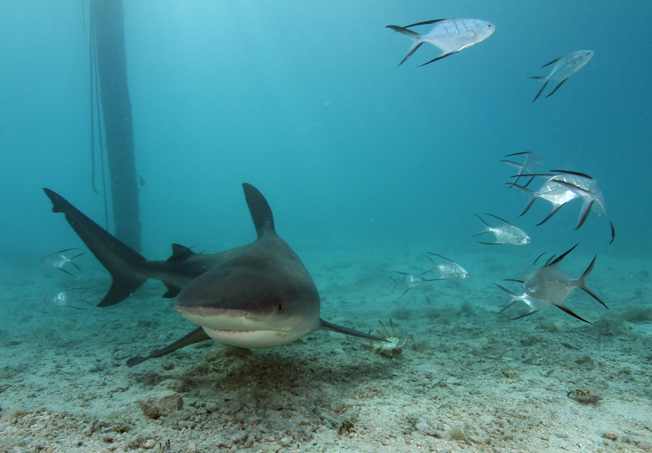
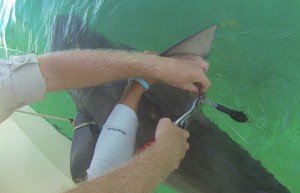 The
The 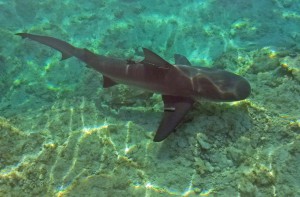 The bulls sharks encountered at Cape Eleuthera usually arrive in October-November when the water temperature starts to cool, and are commonly sighted in the marina until spring where they compete with the nurse sharks and snapper for fishermen’s discards. An interesting characteristic of this aggregation it is entirely composed of large mature females, the most important reproductive component of any population. A male has yet to be seen at Cape Eleuthera. Bull sharks pup in freshwater or estuarine areas, a habitat which is almost completely absent in The Bahamas and Turks and Caicos Islands, suggesting that these animals’ migrations will take them north to Florida, or perhaps south towards Cuba, Haiti or the Dominican Republic in search of a safe place to give birth to their pups. The data from these tags will help us to understand where this important demographic go when the leave Cape Eleuthera and hopefully help solve this mystery.
The bulls sharks encountered at Cape Eleuthera usually arrive in October-November when the water temperature starts to cool, and are commonly sighted in the marina until spring where they compete with the nurse sharks and snapper for fishermen’s discards. An interesting characteristic of this aggregation it is entirely composed of large mature females, the most important reproductive component of any population. A male has yet to be seen at Cape Eleuthera. Bull sharks pup in freshwater or estuarine areas, a habitat which is almost completely absent in The Bahamas and Turks and Caicos Islands, suggesting that these animals’ migrations will take them north to Florida, or perhaps south towards Cuba, Haiti or the Dominican Republic in search of a safe place to give birth to their pups. The data from these tags will help us to understand where this important demographic go when the leave Cape Eleuthera and hopefully help solve this mystery.
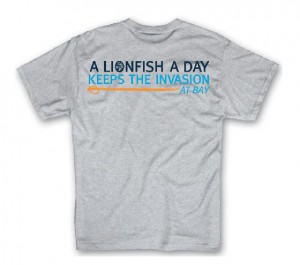

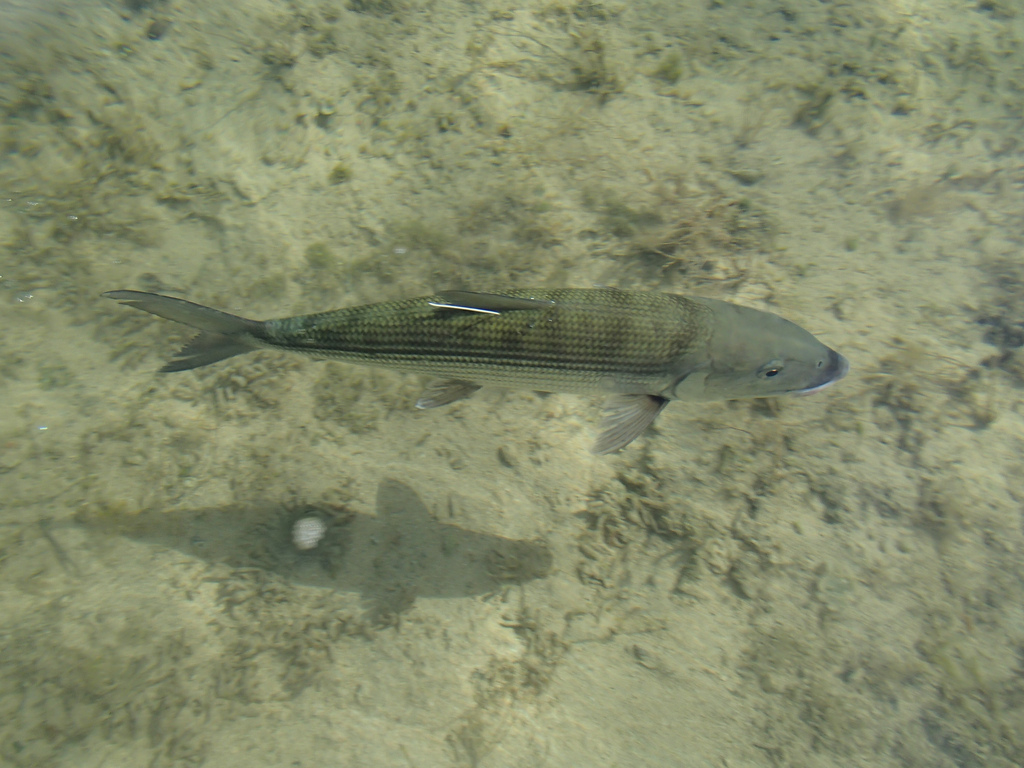 A team of scientists consisting of Aaron Shultz and Malcom Goodman from the Cape Eleuthera Institute, David Philipp and Julie Claussen from the Fisheries Conservation Foundation, Karen Murchie from College of the Bahamas (Freeport), and Greg Vincent and Jason Franklin of H2O
A team of scientists consisting of Aaron Shultz and Malcom Goodman from the Cape Eleuthera Institute, David Philipp and Julie Claussen from the Fisheries Conservation Foundation, Karen Murchie from College of the Bahamas (Freeport), and Greg Vincent and Jason Franklin of H2O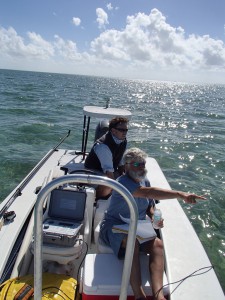 Bonefishing from Grand Bahama gathered in Freeport in January to track bonefish movements. This project began in October 2013, when 30 bonefish from around the island of Grand Bahama were captured and implanted with acoustic tags. Electronic receivers were then placed in strategic locations throughout the island and recorded if a tagged fish swam nearby. Fish were also located periodically using a manual receiver.
Bonefishing from Grand Bahama gathered in Freeport in January to track bonefish movements. This project began in October 2013, when 30 bonefish from around the island of Grand Bahama were captured and implanted with acoustic tags. Electronic receivers were then placed in strategic locations throughout the island and recorded if a tagged fish swam nearby. Fish were also located periodically using a manual receiver.
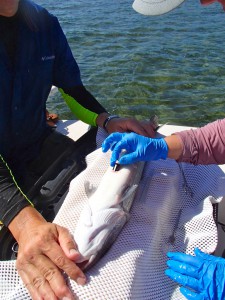 This early retrieval of data from the receivers was very encouraging, with several of the tagged fish being detected. Two fish with transmitters, likely travelling to spawning locations, were recorded
This early retrieval of data from the receivers was very encouraging, with several of the tagged fish being detected. Two fish with transmitters, likely travelling to spawning locations, were recorded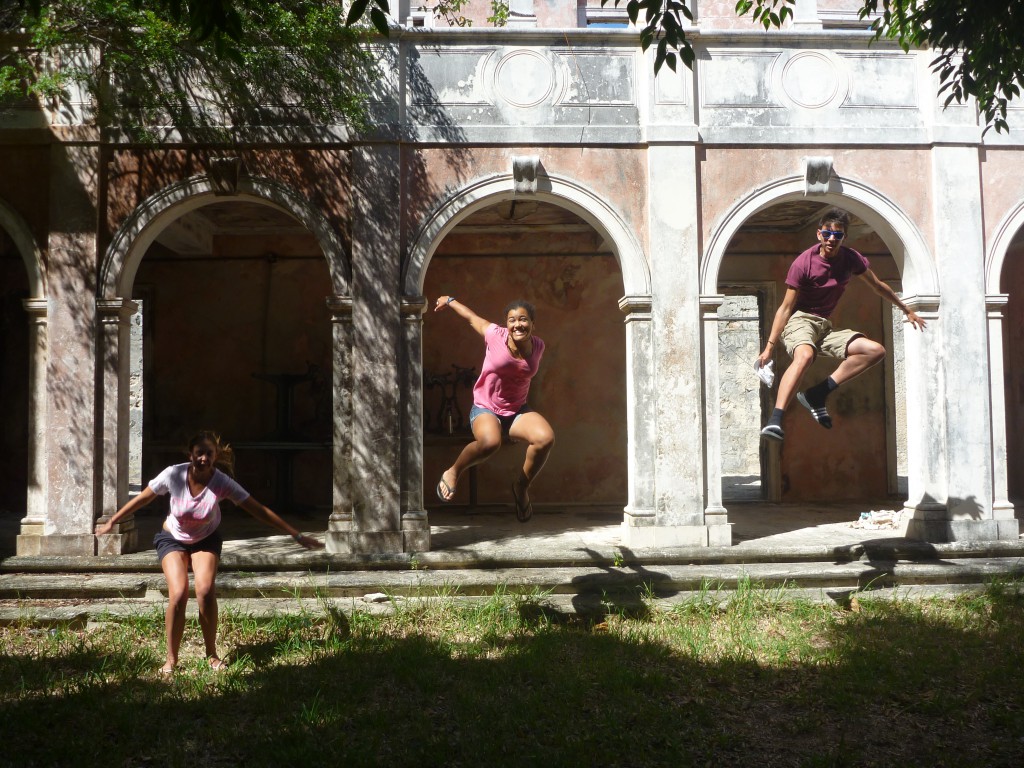
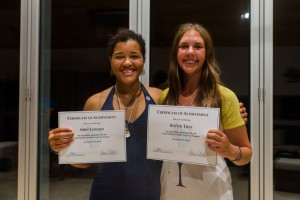 The students got to hang out with DCMS resource center every Tuesday and Thursday evenings. This consisted of them assisting students with their reading skills. Not only that though, the Gappers got to have meaningful conversations about their history, both personal and geographical that has impacted their experience tremendously, making them think differently about different aspects of life here in the Bahamas.
The students got to hang out with DCMS resource center every Tuesday and Thursday evenings. This consisted of them assisting students with their reading skills. Not only that though, the Gappers got to have meaningful conversations about their history, both personal and geographical that has impacted their experience tremendously, making them think differently about different aspects of life here in the Bahamas.